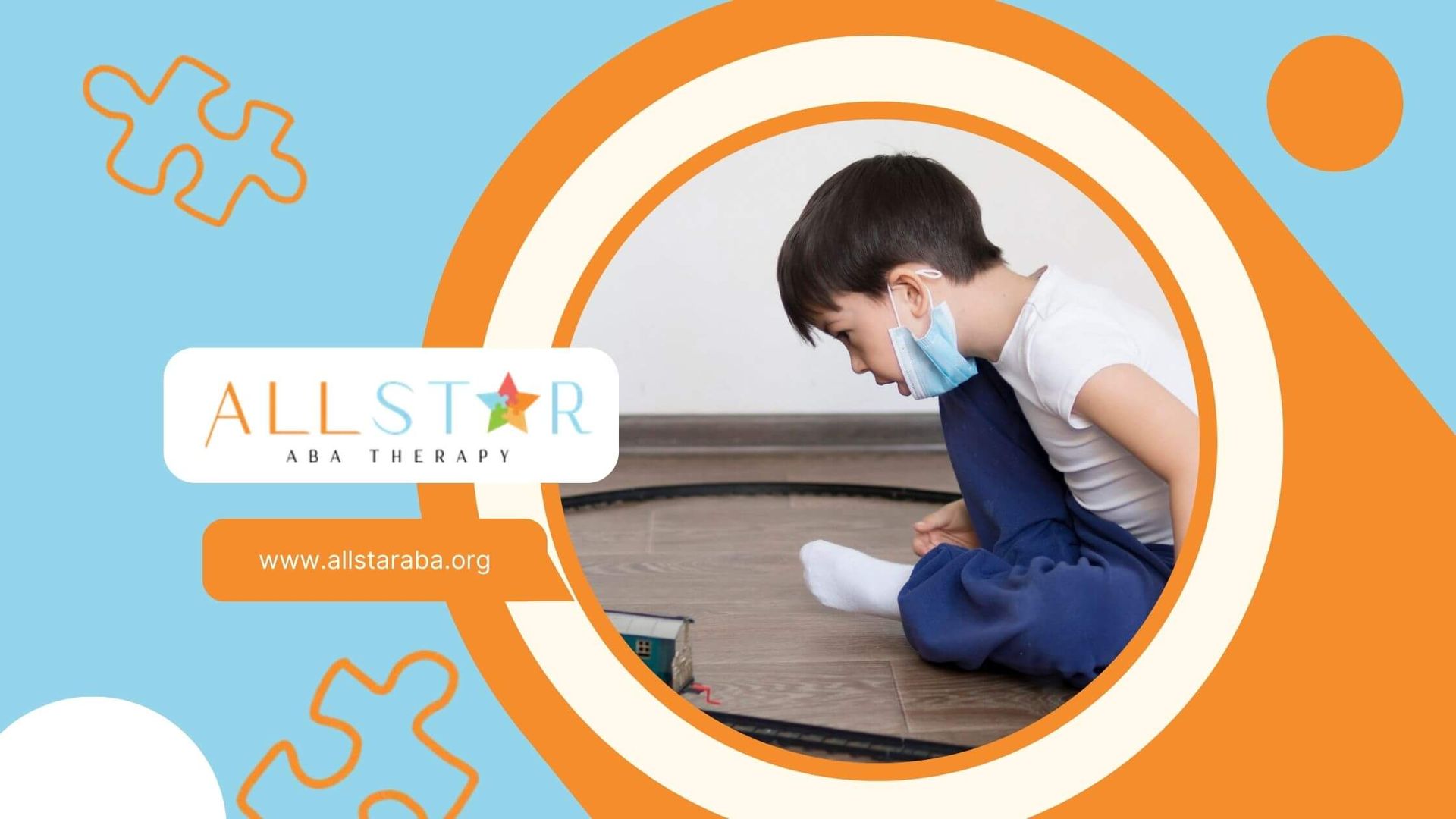New Paragraph
Understanding the Autism Spectrum Disorder Evaluation Process
Diagnosing Autism Spectrum Disorder
Accurately diagnosing Autism Spectrum Disorder (ASD) involves a comprehensive evaluation process. This section offers an overview of ASD diagnosis and highlights various diagnostic tools used by professionals.
Overview of ASD Diagnosis
Autism Spectrum Disorder (ASD) is typically diagnosed by a team of specialists, including neurodevelopmental pediatricians, child neurologists, psychologists, and other healthcare professionals. The diagnostic process often begins with caregivers or parents noticing developmental delays or behavioral concerns in their child and consulting a primary healthcare provider. The provider may then refer the child to a specialist for a more detailed evaluation.
The American Psychiatric Association’s Diagnostic and Statistical Manual, Fifth Edition (DSM-5), provides standardized criteria to help diagnose ASD. The criteria include:
- Persistent deficits in social communication and interaction.
- Restricted and repetitive patterns of behavior.
- Symptoms must be present in the early developmental period.
- Clinically significant impairment in social, occupational, or other important areas of functioning.
These criteria are critical for professionals conducting the autism spectrum disorder evaluation to ensure a comprehensive and accurate diagnosis.
Diagnostic Tools for ASD
Several diagnostic tools and methods are utilized to diagnose ASD, each serving a unique purpose in assessing various aspects of the disorder. Here are some commonly used tools:
DSM-5
The DSM-5 is a key diagnostic tool that outlines specific criteria for diagnosing ASD. It helps classify the severity of symptoms on a 3-level scale, assisting in tailoring interventions based on individual needs.
| Severity Level | Description |
|---|---|
| Level 1 | Requires support |
| Level 2 | Requires substantial support |
| Level 3 | Requires very substantial support |
M-CHAT
The Modified Checklist for Autism in Toddlers (M-CHAT) is a widely used screening tool for young children. It involves a series of "yes/no" questions completed by caregivers about their child's behavior and development. The results help identify children at risk for ASD who need further evaluation.
| Age Group | Sensitivity | Specificity |
|---|---|---|
| 16-30 months | 85% | 99% |
ADI-R and ADOS
The Autism Diagnostic Interview-Revised (ADI-R) and the Autism Diagnostic Observation Schedule (ADOS) are structured diagnostic tools commonly used by specialists. They involve detailed interviews with caregivers and direct observation of the child's behavior, respectively. These tools are essential in forming a comprehensive understanding of the child's developmental history and present behaviors.
By understanding the diagnostic criteria and tools used in ASD evaluation, caregivers and individuals can be better informed when seeking a diagnosis. Additional information on diagnostic criteria can be found in our article on autism diagnosis criteria.
Evaluating Autism in Children
Understanding the process of evaluating Autism Spectrum Disorder (ASD) in children is essential for early intervention and support. Here we explore the early signs and symptoms, diagnostic criteria, and how severity levels are assessed.
Early Signs and Symptoms
Recognizing the early signs of ASD can facilitate timely autism spectrum disorder evaluation and intervention. Some common symptoms observed in young children include:
- Avoidance of eye contact
- Lack of response to their names
- Limited interactive and pretend play
- Repetitive behaviors
- Difficulty in understanding social cues
- Delayed language skills
According to PubMed Central, early identification of these symptoms by caregivers and healthcare providers is crucial for diagnosis and appropriate interventions.
Here is a table summarizing symptoms commonly observed in children with ASD:
| Symptom | Description |
|---|---|
| Avoidance of Eye Contact | Not making eye contact with others |
| Lack of Response to Names | Not responding when called by name |
| Limited Play | Minimal or no interactive and pretend play |
| Repetitive Behaviors | Repeating the same actions or phrases |
| Difficulty with Social Cues | Struggling with interpreting facial expressions and gestures |
| Delayed Language Skills | Slow development of speaking abilities |
Diagnostic Criteria for ASD
The Diagnostic and Statistical Manual of Mental Disorders, Fifth Edition (DSM-5) is widely used for diagnosing ASD. It focuses on two main areas: persistent deficits in social communication and interaction, and restricted, repetitive patterns of behavior.
Core Diagnostic Criteria
Persistent Deficits in Social Communication and Interaction
- Difficulties in making friendships
- Problems with two-way conversation
- Limited use of non-verbal communication
Restricted, Repetitive Patterns of Behavior
- Engaging in repetitive motor movements
- Insistence on routines
- Highly fixated interests
- Sensitivity to sensory input
Assessing Severity Levels
The severity of ASD is assessed based on the level of support needed. The DSM-5 categorizes ASD severity into three levels:
Level 1: Requiring Support
- Trouble initiating social interactions
- Organized but flexible behavior
Level 2: Requiring Substantial Support
- Marked difficulties in social interactions
- Engagement in repetitive behaviors that interfere with functioning
Level 3: Requiring Very Substantial Support
- Severe deficits in verbal and nonverbal communication
- Extreme difficulty coping with changes and repetitive behaviors that severely impact daily life
These levels help in tailoring interventions to meet the specific needs of each child. Early diagnosis, typically between ages two and five, offers opportunities for therapies that can improve communication, social skills, and adaptability.
Autism Diagnosis in Adults
Challenges in Adult Diagnosis
Diagnosing autism spectrum disorder (ASD) in adults presents unique challenges. Many specialists trained in identifying autism have traditionally focused on children or teenagers, limiting access to adult evaluations. Additionally, the varied presentations of autism and inadequate assessment tools can result in misdiagnosis or false negatives. These diagnostic oversights are particularly prevalent among populations like Black, Indigenous, and other People of Color (BIPOC), as well as individuals who are not cisgender boys or men.
Another considerable challenge is the phenomenon of "masking," where individuals camouflage their autistic traits, making it difficult for evaluators to observe the characteristics of autism. This masking behavior can lead to improper or missed diagnoses.
Assessment by Specialists
Evaluations for autism in adults are typically conducted by psychologists or psychiatrists with specialized training in autism assessments. These professionals use a variety of methods to assess behaviors and characteristics consistent with ASD to ensure an accurate diagnosis.
There are several diagnostic tools and criteria used in these evaluations, such as the Autism Diagnostic Interview-Revised (ADI-R) and the Autism Diagnostic Observation Schedule (ADOS).
Cost and Accessibility of Evaluations
The cost of autism evaluations for adults can be prohibitively expensive, ranging from $800 to $5,000 in the United States Many health insurance plans do not cover the expenses associated with these evaluations, resulting in significant out-of-pocket costs for those seeking a diagnosis. This financial barrier can deter individuals from pursuing formal evaluations, potentially excluding them from necessary support services and accommodations.
| Evaluation Aspect | Details |
|---|---|
| Cost | $800 - $5,000 |
| Insurance Coverage | Often not covered |
| Common Diagnostic Tools | ADI-R, ADOS |
| Specialist Required | Psychologist or Psychiatrist |
For adults in the autistic community who find these formal evaluations inaccessible, self-diagnosis or self-identification is often a chosen alternative. Some avoid formal diagnosis to escape the stigma and discrimination associated with an autism diagnosis.
Addressing the cost and accessibility of autism evaluations is crucial for ensuring that adults have the opportunity to receive accurate diagnoses and access necessary support services.
Culturally Sensitive Evaluations
Addressing Bias in Diagnosis
Traditional assessment tools may not adequately capture the unique characteristics and experiences of individuals from diverse backgrounds. Populations including Black, Indigenous, and People of Color (BIPOC) and those who are not cisgender boys or men are particularly impacted by these shortcomings. Misdiagnosis and false negatives often occur because the assessments are not tailored to these groups, leading to inaccurate results.
To address bias:
- It is crucial to develop and use diagnostic tools that are validated across different demographics.
- Specialists must be trained to recognize the varied presentations of autism, especially in groups that are often underrepresented in research studies.
- Evaluators should be aware of the potential for masking behaviors, where individuals may hide symptoms to fit social norms, which can further complicate diagnosis in diverse populations.
Importance of Cultural Competence
Increasing cultural competence in the evaluation process ensures that autism spectrum disorder evaluations are more accurate and equitable. Cultural competence involves understanding and respecting cultural differences, and incorporating this knowledge into the diagnostic process.
Key aspects include:
- Cultural Awareness: Evaluators should be knowledgeable about the cultural backgrounds and practices of the individuals they assess. This awareness helps in understanding how cultural factors might influence the presentation of autism symptoms.
- Inclusive Assessment Tools: Utilizing tools and measures that are normed and validated for a variety of cultural groups can help reduce biases. For example, including culturally sensitive questions and scenarios in diagnostic tests can lead to more accurate assessments.
- Training and Education: Continuous training for evaluators on the importance of cultural competence and the impact of biases can help in refining the diagnostic process. This training might include workshops, seminars, and ongoing education programs.
By addressing these issues, the aim is to provide more accurate and fair evaluations for all individuals, ensuring that everyone gets the support they need after being diagnosed with autism spectrum disorder.
| Population Group | Common Diagnostic Issues |
|---|---|
| BIPOC | Misdiagnosis, False Negatives |
| Non-Cisgender | Inaccurate Assessments |
Commonly Used Diagnostic Tests
Diagnosing autism spectrum disorder (ASD) involves the use of various standardized tools. Understanding these tests can provide clarity on the autism spectrum disorder evaluation process.
ADI-R and ADOS
ADI-R
The Autism Diagnostic Interview-Revised (ADI-R) is a comprehensive interview that gathers detailed information about a child's behavior and development. Conducted with parents or caregivers, it covers three key domains:
- Social interaction
- Communication
- Repetitive behaviors
T
his tool is beneficial for obtaining a thorough developmental history and is commonly used in clinical and research settings.
ADOS
The Autism Diagnostic Observation Schedule (ADOS) is another pivotal tool in the diagnostic process. Unlike ADI-R, ADOS involves direct observation. It uses structured and semi-structured tasks designed to elicit social interaction, communication, and imaginative use of materials from individuals. This test is divided into different modules suitable for various age groups and developmental levels.
CARS and GARS
CARS
The Childhood Autism Rating Scale (CARS) evaluates the severity of autism symptoms. It consists of 15 items that cover various aspects of behavior, such as social interaction, communication, and repetitive behaviors. Information is gathered through direct observation and feedback from parents or caregivers.
| Diagnostic Tool | Key Areas | Method | Details |
|---|---|---|---|
| ADI-R | Social interaction, communication, repetitive behaviors | Interview | Detailed developmental history from parents/caregivers |
| ADOS | Social interaction, communication, behavior | Observation | Structured activities across age groups |
GARS
The Gilliam Autism Rating Scale (GARS) is another frequently used evaluation tool. It features three subscales:
- Stereotyped Behaviors Scale
- Communication Scale
- Social Interaction Scale
Each subscale contributes to an overall rating indicating the likelihood of ASD. This tool combines observation with input from caregivers, offering a comprehensive overview.
| Diagnostic Tool | Subscales | Method | Details |
|---|---|---|---|
| CARS | Social interactions, communication, repetitive behaviors | Observation | 15 items covered |
| GARS | Stereotyped behaviors, communication, social interaction | Observation and interview | Overall ASD rating |
These diagnostic tools help specialists provide accurate diagnoses, leading to better support and intervention strategies for individuals with autism spectrum disorder. By understanding the nuances of each test, caregivers and individuals can navigate the ASD evaluation process more confidently.
Prevalence and Trends in ASD
Understanding the trends in Autism Spectrum Disorder (ASD) is critical for the allocation of resources and services to support individuals diagnosed with autism. This section will address the increase in diagnoses and the age and gender distribution of ASD.
Increase in Diagnoses
The prevalence of Autism Spectrum Disorder evaluation has seen a considerable rise over recent years. From 2011 to 2022, the rate of ASD diagnoses in the US increased by 175%. In 2011, there were 2.3 diagnoses per 1,000 individuals, which elevated to 6.3 per 1,000 by 2022. This data highlights the growing recognition and diagnosis of autism across diverse populations.
| Year | Prevalence (per 1,000 individuals) |
|---|---|
| 2011 | 2.3 |
| 2015 | 4.1 |
| 2022 | 6.3 |
Further analysis showed that the ASD diagnosis rate was highest among 5-to-8-year-olds throughout the study period. Moreover, there was a striking 450% increase in diagnosis rates among 26-to-34-year-olds.
Age and Gender Distribution
The Autism Spectrum Disorder evaluation reveals notable trends in age and gender distribution. The diagnostic rate is particularly high among young children. According to recent data from the Centers for Disease Control and Prevention (CDC), 1 out of every 59 children has been diagnosed with autism. This represents a significant increase compared to the year 2000, when only 1 in 150 children were diagnosed.
| Age Group | Prevalence (per 1,000 individuals) |
|---|---|
| 5-8 Years | Highest |
| 26-34 Years | 450% increase |
Gender disparities are also evident in the evaluation of ASD. Historically, males have been more commonly diagnosed with autism. However, recent trends indicate a greater relative increase in diagnoses among females, both in children and adults.
Health system data further suggest significant variations among racial and ethnic minority groups in the US. These findings underscore the need for culturally-sensitive diagnostic approaches that ensure equitable access to assessment and intervention services.
By understanding the trends in ASD diagnoses, stakeholders can better prepare to meet the needs of this expanding population with appropriate resources and supports.
Conclusion
In conclusion, accurately diagnosing Autism Spectrum Disorder is a crucial first step toward providing individuals with the support they need to thrive. From recognizing early signs in children to navigating the challenges of adult and culturally sensitive evaluations, understanding the diagnostic process helps caregivers and individuals make informed decisions.
If you suspect that a loved one may be showing signs of autism, don’t wait—early intervention can make a significant difference. Contact All Star ABA today to learn how our expert team can support you through the diagnosis process and beyond with personalized ABA therapy services.
Sources:
- https://www.cdc.gov/autism/hcp/diagnosis/index.html
- https://www.ncbi.nlm.nih.gov/books/NBK573609/
- https://pmc.ncbi.nlm.nih.gov/articles/PMC10491411/
- https://www.verywellmind.com/who-can-diagnose-autism-in-adults-6748943
- https://pubmed.ncbi.nlm.nih.gov/39476234/
- https://www.health.harvard.edu/blog/how-early-can-you-and-should-you-diagnose-autism-2019082317653
Need Support?
We're Here to Help!
Our experienced team is ready to assist you. Reach out today to discuss how we can support your child's development and well-being.
Get started with expert ABA therapy today.








